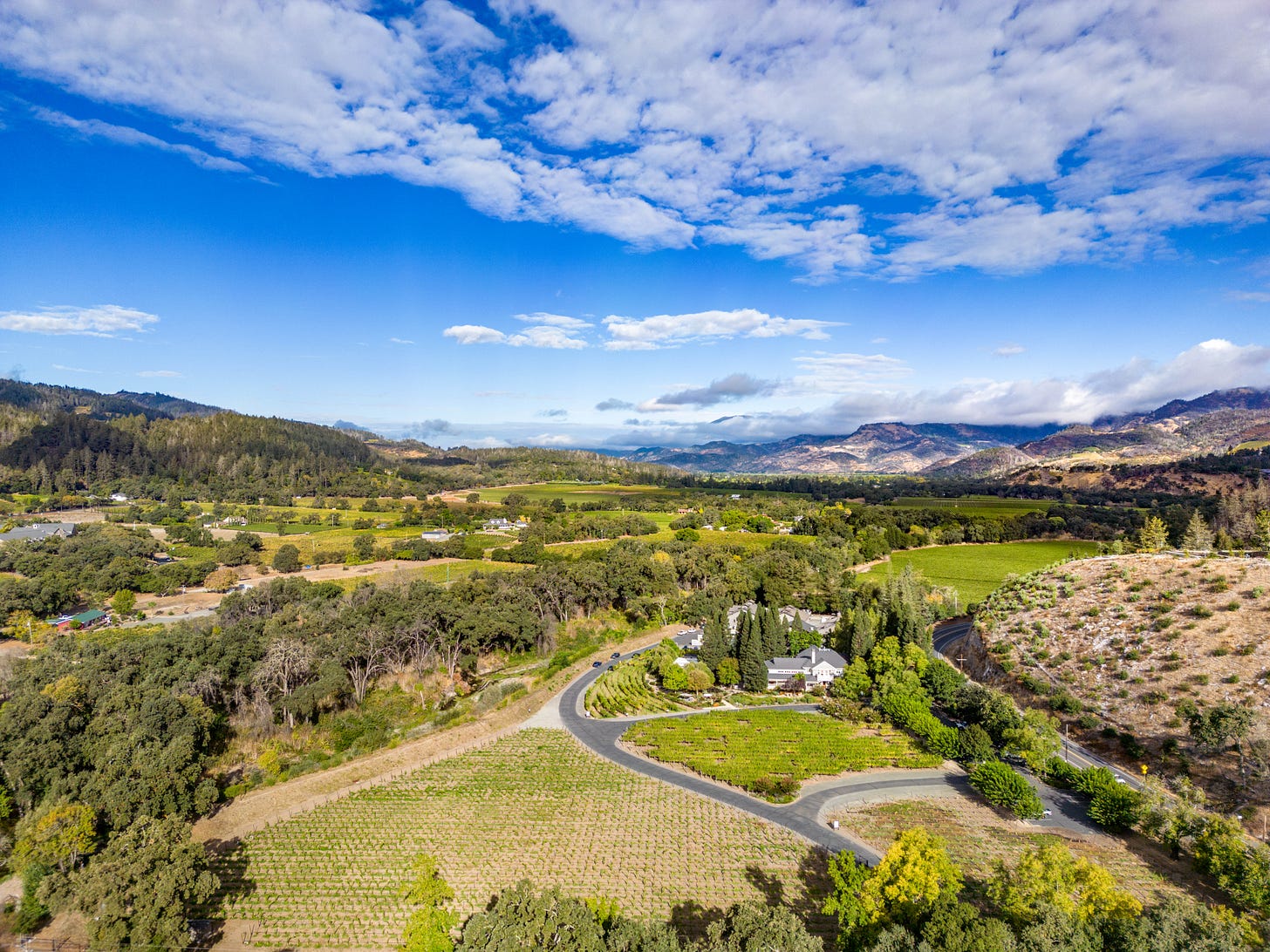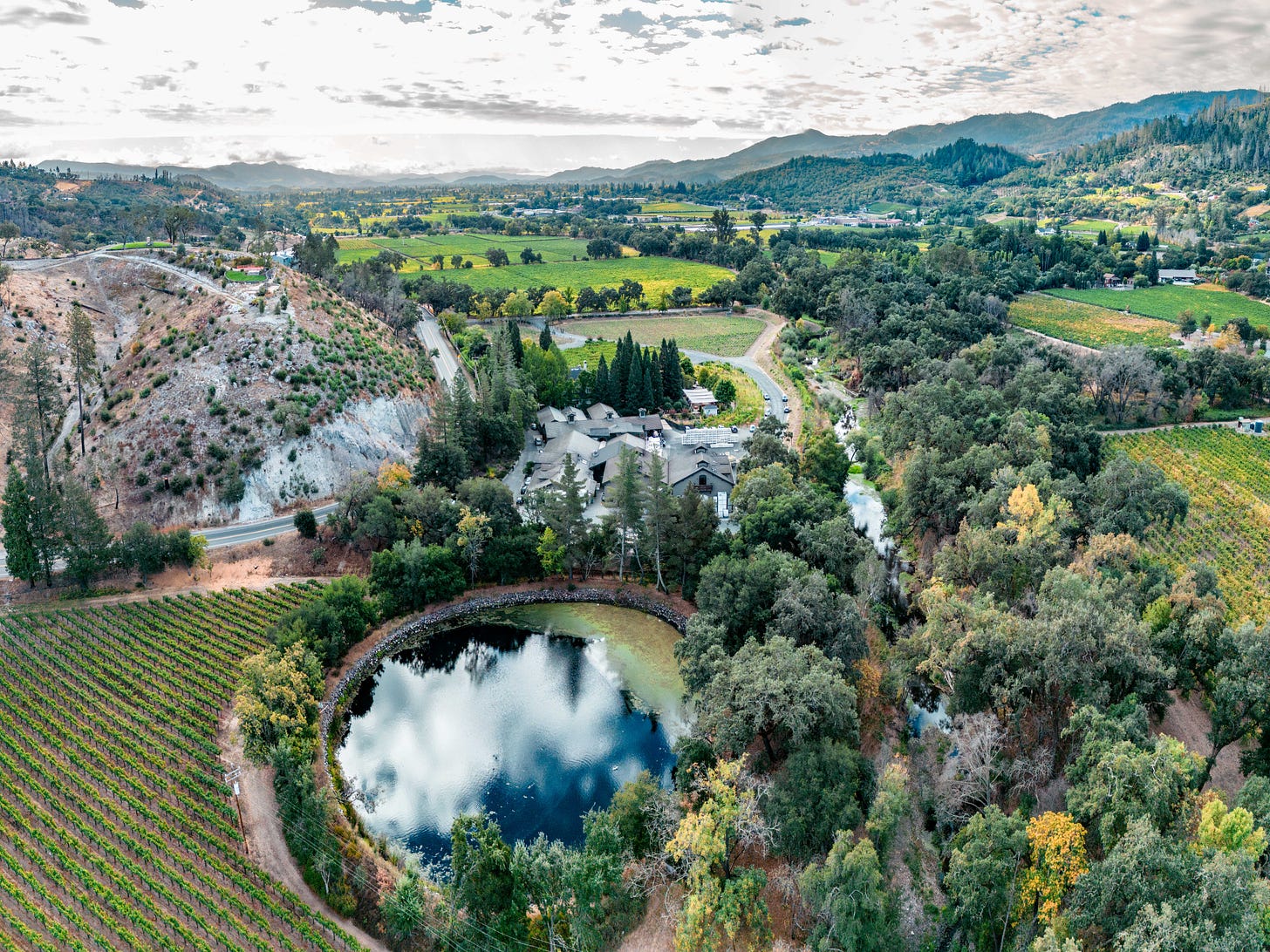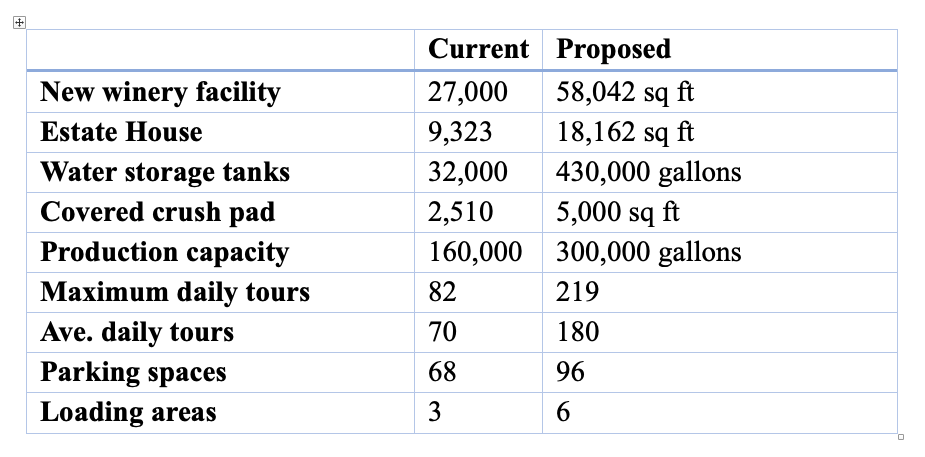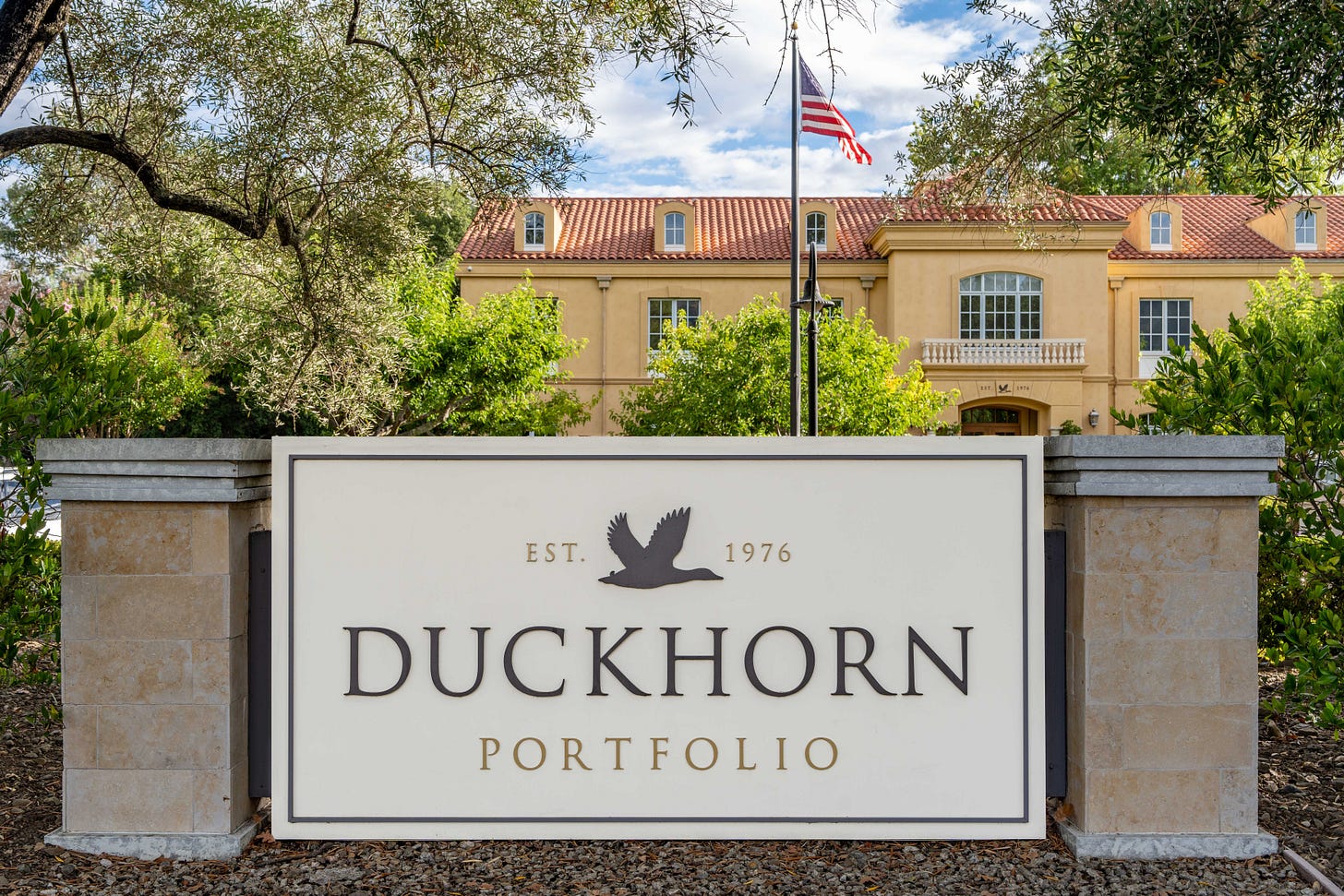ST. HELENA, Calif. — Two local groups, Preserve Lodi Lane and Napa’s Water Audit California, are appealing the May 3 Napa County Planning Commission’s decision approving the expansion of Duckhorn NAPA Vineyards Winery on Lodi Lane.

The groups’ reasons for the appeals include the project’s water use, the increased CO2 emissions from processing so many grapes, the size of a new processing facility (a little larger than a football field, which is 57,600 square feet), an allegedly inadequate staff report, and increased visitor and truck traffic on a two-lane rural road, which is being called “the industrialization of Lodi Lane.”
In his appeal, William McKinnon, general counsel for Water Audit California, wrote about water issues and preserving the public trust.
“There was no inquiry into potential injury to the public trust,” he wrote. “Critical findings underlying the MND (Mitigated Negative Declaration) are not supported by the evidence. There is long-term and extensive evidence of existing environmental injury; the projected water demand for the project is greater than the groundwater recharge from the site; and the proposed project will consume more water than the existing facility.”
Regarding Duckhorn’s expansion plans, McKinnon said the planning commission did not hold a fair and impartial hearing.
“Critical issues were not considered and evidence was withheld or misrepresented,” he wrote in his appeal.
During an interview McKinnon blamed county staff for not preparing a complete report, leaving out documents that contain necessary information. McKinnon seeks the repeal of two documents — the Mitigated Negative Declaration and Mitigation Monitoring and Reporting Program — and approval of the major modification of Duckhorn’s use permit, first approved in 1976. To address the issues he brings up, he seeks the preparation of an Environmental Impact Report.
The Napa County Board of Supervisors is scheduled to address the groups’ appeals on Tuesday, Nov. 7. An agenda has yet to be created for this meeting, but Water Audit California’s appeal of the planning commission’s approval of a use permit modification for Rutherford Ranch Winery is set for 9 a.m.
Also appealing the decision is John D. Murphy, who has formed Preserve Lodi Lane. One of his issues is traffic on a historic rural road, bookended by two proposed developments: what he calls the “massive” Duckhorn expansion on Lodi Lane at Silverado Trail and the Inn at the Abbey, a 79-room luxury hotel and resort on both sides of Lodi Lane at Highway 29. Napa County Planning, Building and Environmental Services studied the traffic conditions and said the impacts are “less than significant” and “will have no impact,” according to its initial study of the proposed Duckhorn expansion.

The two developments “will permanently transform an unpresupposing rural road in the middle of the storied Napa Valley Agricultural Preserve into a permanent industrial parkway,” Murphy wrote in an August letter to Billy Summers, a St. Helena council member. “These developments will materially affect the citizens of the City of St. Helena.”
Murphy and his wife, Paula Key, founded Sang-Froid Vineyards on Lodi Lane in 2013.
Dave and Nancy Yewell, neighbors on Ehlers Lane, also are concerned about the changes on Lodi Lane.
“Duckhorn seeks the Supervisors’ approval to build a new 58,042-square-foot production facility to produce 300,000 gallons on their western parcel, purchased five years ago from Cathy (Russ) Oles. Duckhorn will move their wine processing from their Hopland facility to this new building. Enormous trucks will deliver grapes for wine, transport case lots as well as provide on-site bottling,” Nancy Yewell wrote. The project “substantially increases safety hazards with the local circulation of bicycles, cars and pedestrians,” the Yewells wrote in their comments to the supervisors.
They are also concerned with the increased volume of grapes Duckhorn proposes to process at their new facility, which will increase CO2 emissions, and with the size of the production facility itself.
“It is too large and out of scale given the surrounding Lodi Lane homes and vineyards,” they wrote.
Duckhorn had not responded to requests for a response at the time of publication.
Duckhorn expansion
According to the CEQA Initial Study-Mitigated Negative Declaration, the proposed use permit modifications will be the following:

Additionally, if approved, the use permit will allow for the removal of an existing tank shed, four production facilities and a single-family residence; removal of 3.55 acres of vineyards and 49 trees to make room for its new processing facility; and development of two sanitary wastewater systems for both properties, which are split by the Napa River.

Property’s history
August 1976: The Napa County Planning Commission approved the use permit to convert an existing greenhouse to a winery with maximum production of 36,000 gallons, later reduced to 2,500 gallons per year, 10 parking spaces, eight full- and part-time employees, and no public tours or tastings. In the intervening 47 years the use permit was modified more than a dozen times.
November 1980: The use permit was modified to allow 36,000 gallons per year and the building of an additional 11,200 square feet of building space with 23 parking spaces. A request for public tours and tastings was sought; a mitigation measure was building a left-turn lane northbound on Silverado Trail before tours and tastings could begin.
July 1986: Production capacity increased to 50,000 gallons per year, expansion of the winery building by 3,908 square feet for barrel storage and fermentation tanks were approved.
April 1994: Approval of a 2,500-square-foot barrel building and 544-square-foot expansion to enclose fermentation tanks.
September 1994: Water storage tank pad and 31,000-gallon tank approved.
December 1995: Entrance moved from Silverado Trail to Lodi Lane and eight new parking spaces, for a total of 40, approved.
May 1997: Production increased to 110,000 gallons. Approved were a 7,880 square-foot building for office, marketing and public tasting; marketing plan; employees from seven to 16; public tours limited to 50 per week, 30 on the busiest day; public tasting area limited. The prior condition of left-turn lane on Silverado Trail was abandoned.
June 1998: Mezzanine converted to office/lab use.
December 1998: Use permit revised the office, tasting and retail sales building design and layout with other conditions.
April 1999: An existing 2,760-square-foot greenhouse was replaced with a new two-story, 3,705-square-foot winery production building, relocation of an existing water tank and installation of a temporary winery/office trailer approved.
February 2005: Existing attic storage was converted to office space and blending room reclassified from accessory to production.
October 2005: Wine production increased to 160,000 gallons per year, wastewater systems expanded, employees increased from 28 to 45 with additional part-time and seasonal help, operations increased with expanded hours to seven days a week, marketing plan approved with 5,000 guests per year at various events.
March 2012 and November 2019: New landscape area recognized, tastings and marketing events allowed in the garden, accessory spaces on second floor of Estate House reconfigured.
Currently the property is made up of some 32 acres with an existing 160,000-gallon-per-year winery; some 27,000 square-feet of grape processing, fermentation and storage space in seven production buildings; a covered crush pad; two structures of about 5,000 square feet for tanks and winery maintenance; and the 9,000-square-foot Estate House for hospitality and offices.
Dave Stoneberg is an editor and journalist, who has worked for newspapers in both Lake and Napa counties.





Good reporting! I live just off Lodi Lane and this story will help me and neighbors discuss the issue.
The bigger the footprint, the more it restricts the absorption of rainwater. I am against any winery growing bigger at this time in OUR Valley. They seem to forget it is our valley.